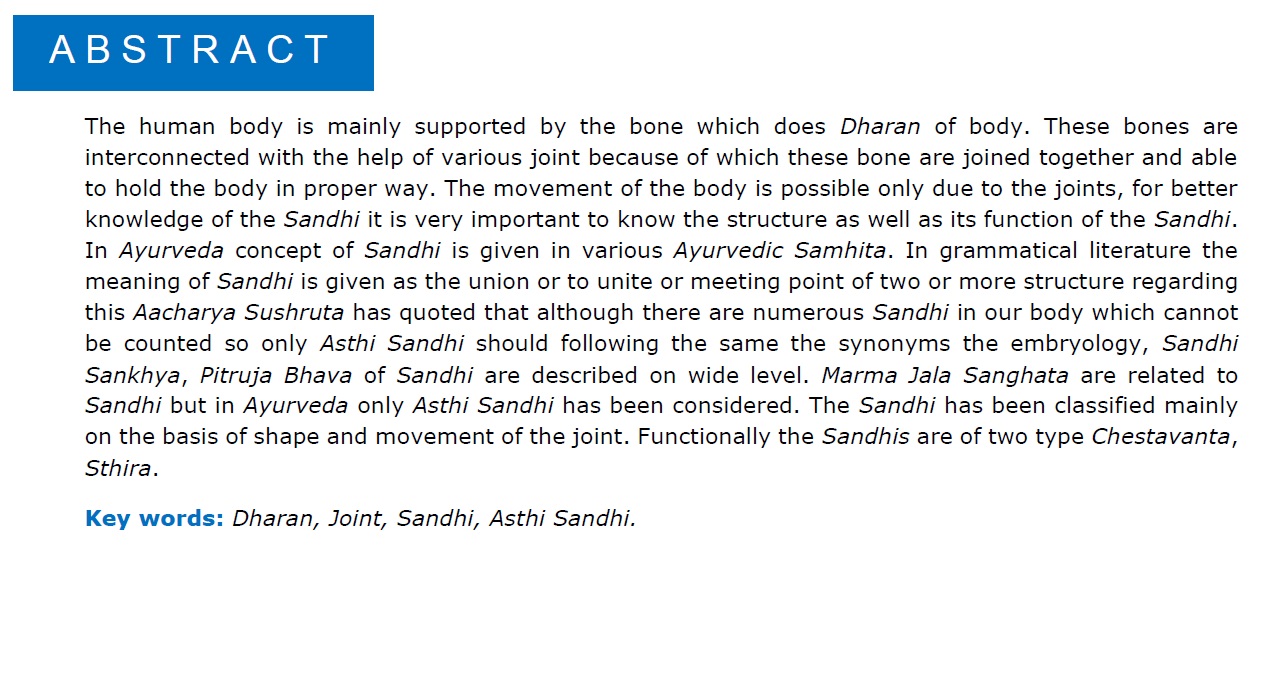Anatomical review of Sandhi Sharir in various type of Sandhi in Ayurveda
Keywords:
Dharan, Joint, Sandhi, Asthi Sandhi.Abstract
The human body is mainly supported by the bone which does Dharan of body. These bones are interconnected with the help of various joint because of which these bone are joined together and able to hold the body in proper way. The movement of the body is possible only due to the joints, for better knowledge of the Sandhi it is very important to know the structure as well as its function of the Sandhi. In Ayurveda concept of Sandhi is given in various Ayurvedic Samhita. In grammatical literature the meaning of Sandhi is given as the union or to unite or meeting point of two or more structure regarding this Aacharya Sushruta has quoted that although there are numerous Sandhi in our body which cannot be counted so only Asthi Sandhi should following the same the synonyms the embryology, Sandhi Sankhya, Pitruja Bhava of Sandhi are described on wide level. Marma Jala Sanghata are related to Sandhi but in Ayurveda only Asthi Sandhi has been considered. The Sandhi has been classified mainly on the basis of shape and movement of the joint. Functionally the Sandhis are of two type Chestavanta, Sthira.
Downloads
References
Sushruta Samhita edited with Ayurveda Tatvasandipika Hindi Commentary by Kaviraja Ambikadutta Shastri. Chaukhambha Sansthan, Varanasi. 12 ed. reprint 2009.
Vagbhata; Astanga Hridaya with commentaries of Sarvang Sundari by Arundatta. Chaukhamba Orientalia, Varanasi. Edition 2012.
Charak Samhita with Vidyotini Hindi Commentary by Pt.Kashinath Shastri & Dr. Gorakhnath. Chaukhambha Bharti Academy, Varanasi. 22 edition 1996.
Sushruta Samhita, Sharir Sthana hindi commentary Ayurveda Rahasya Deepika by Dr. Bhasakar Govind Ghanekar, 1998, Mehar Chand Lachmandas Publication, New Delhi.















